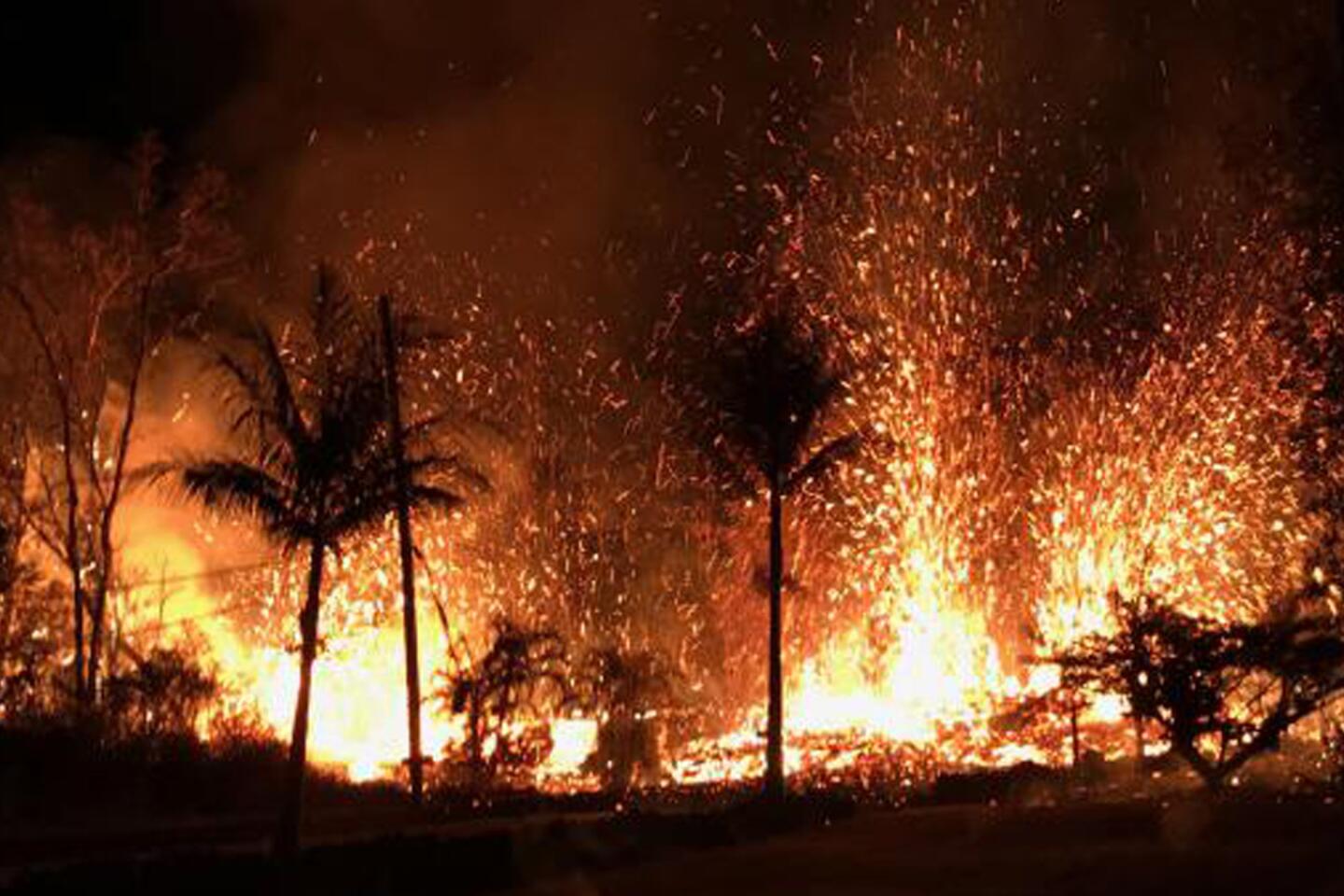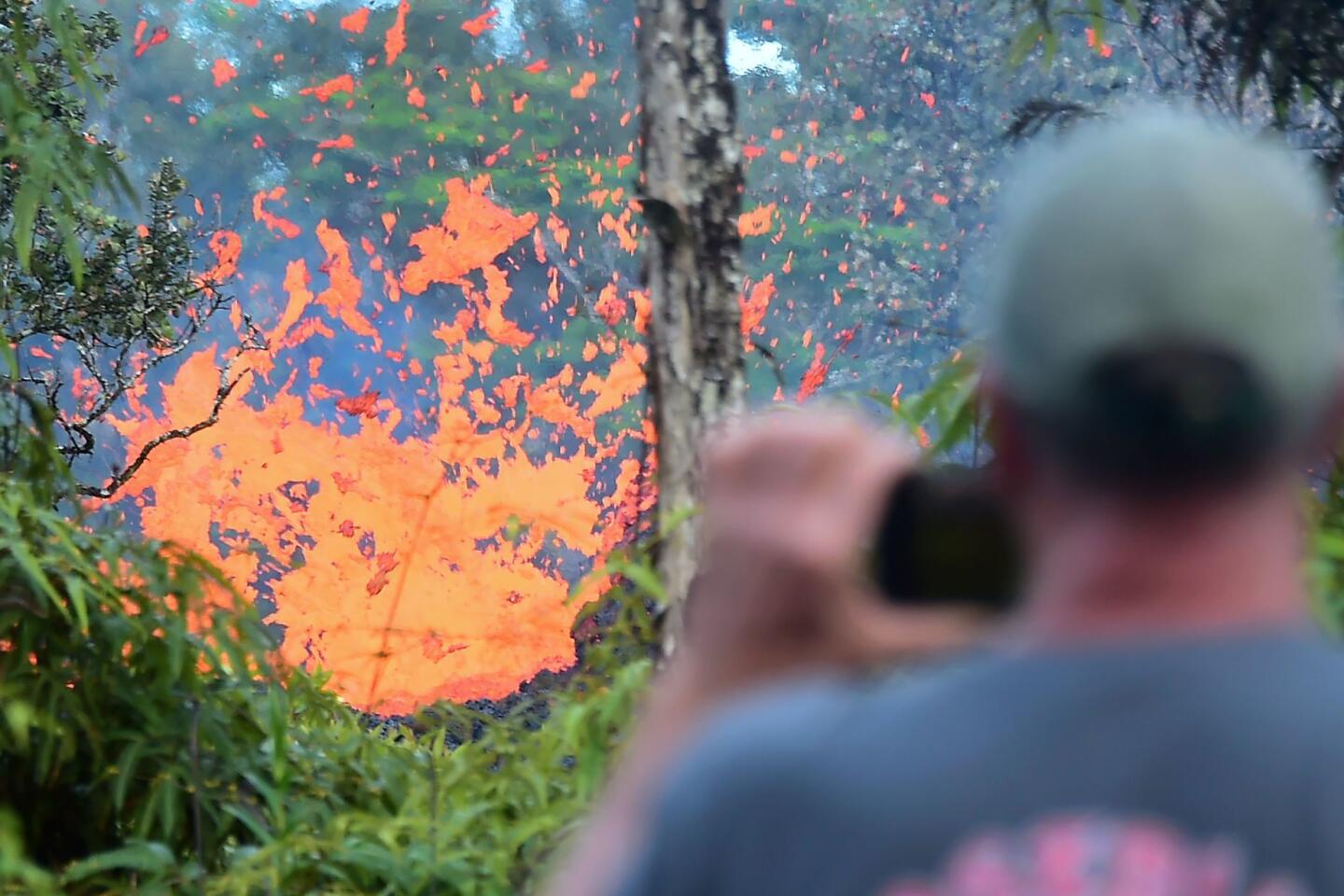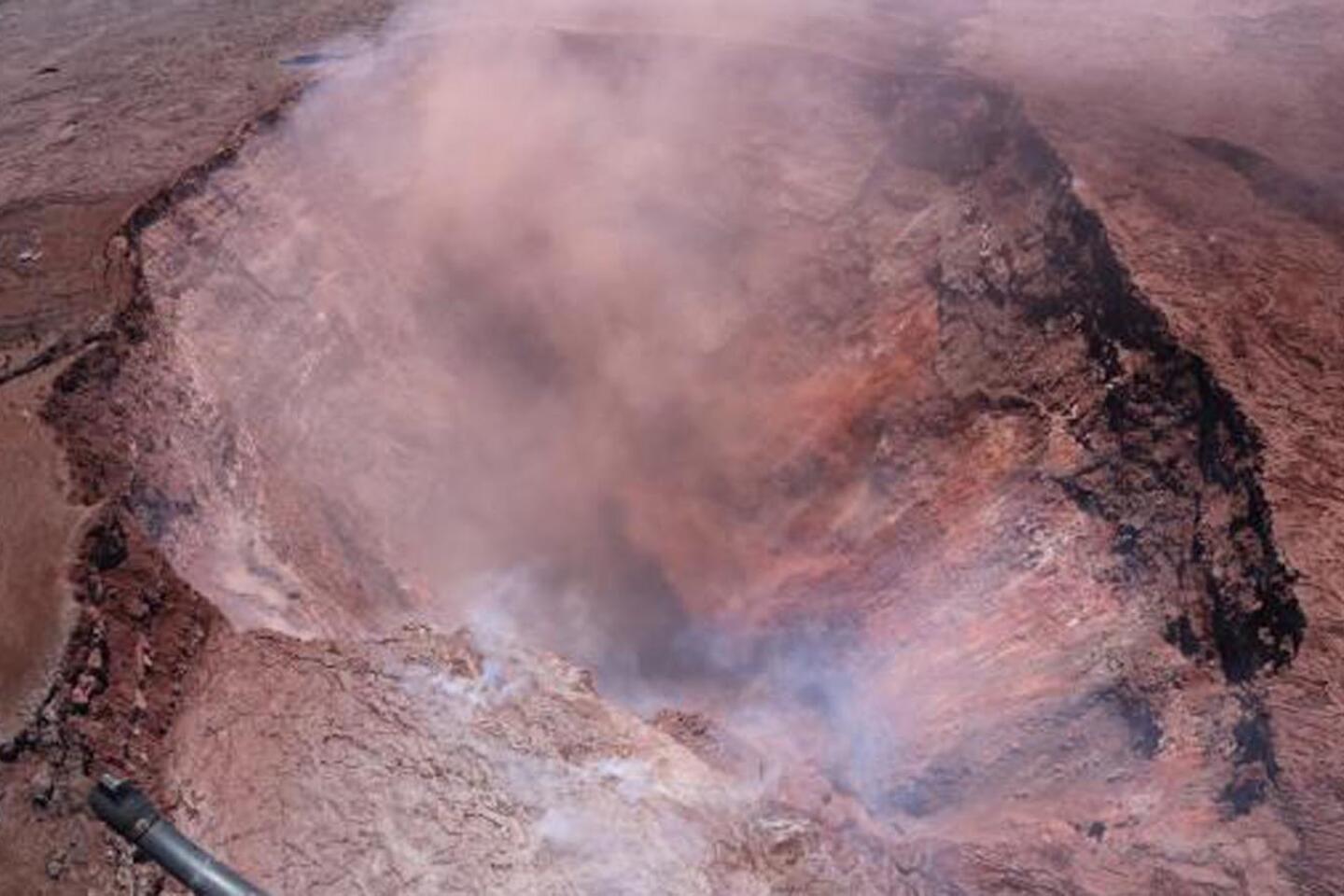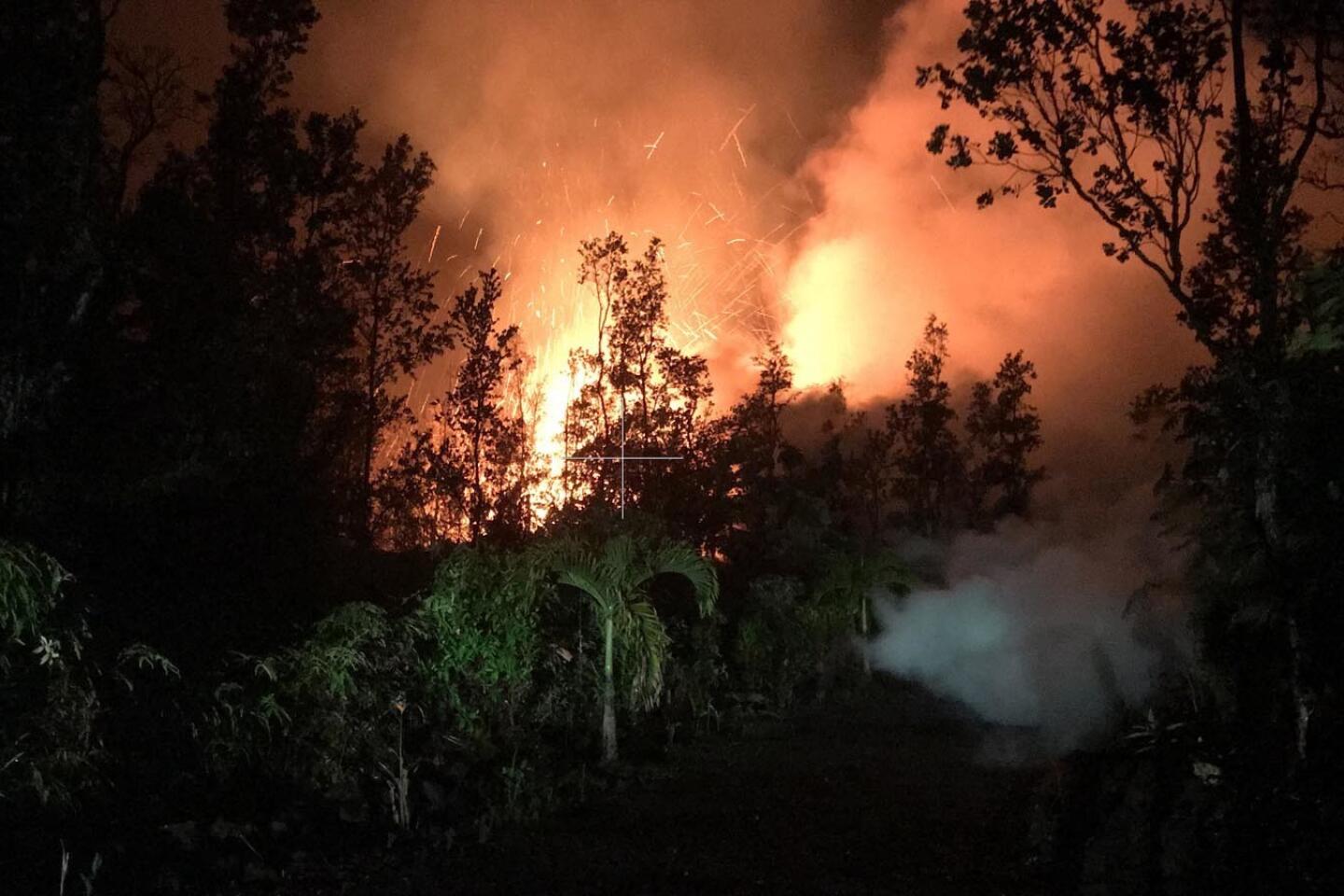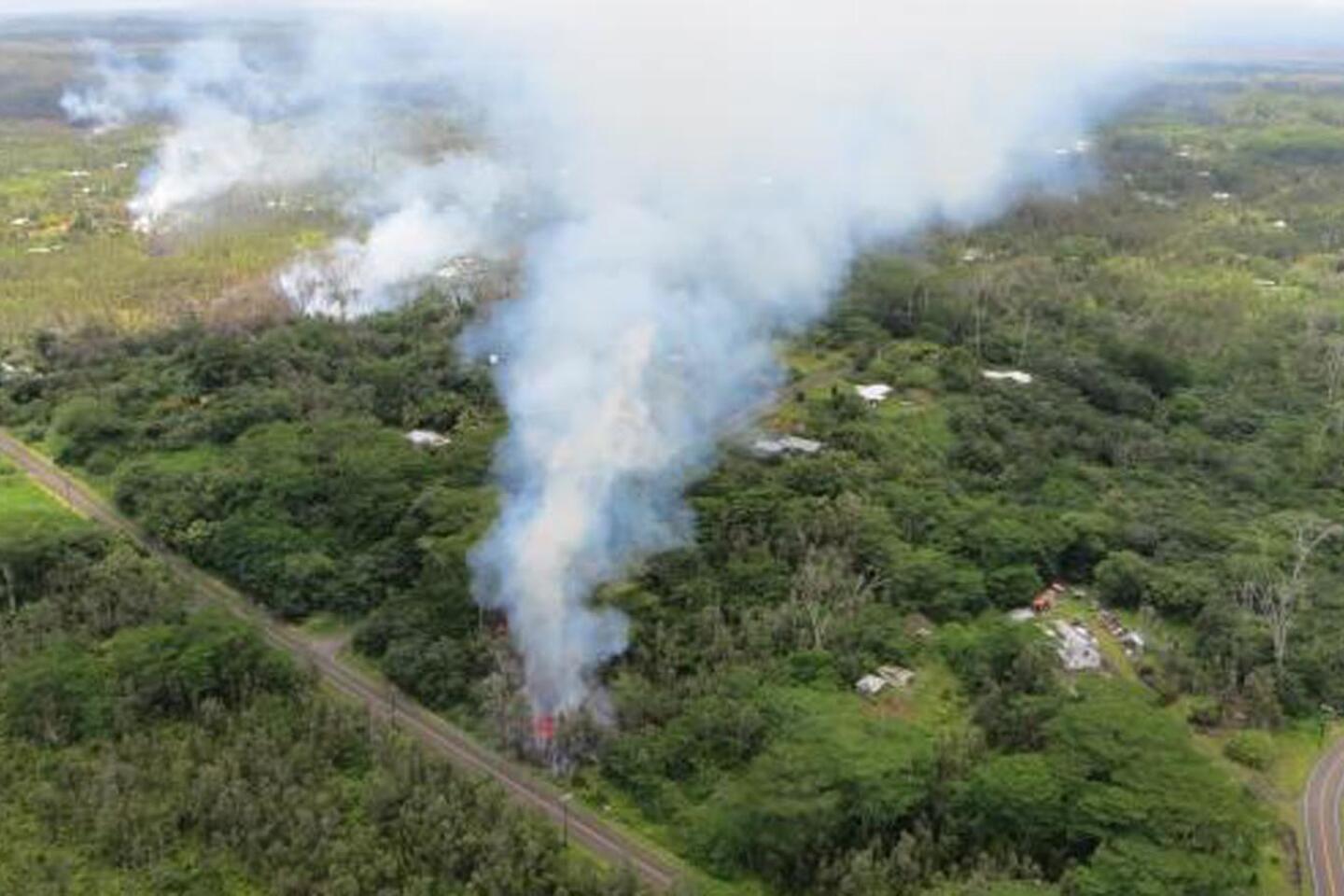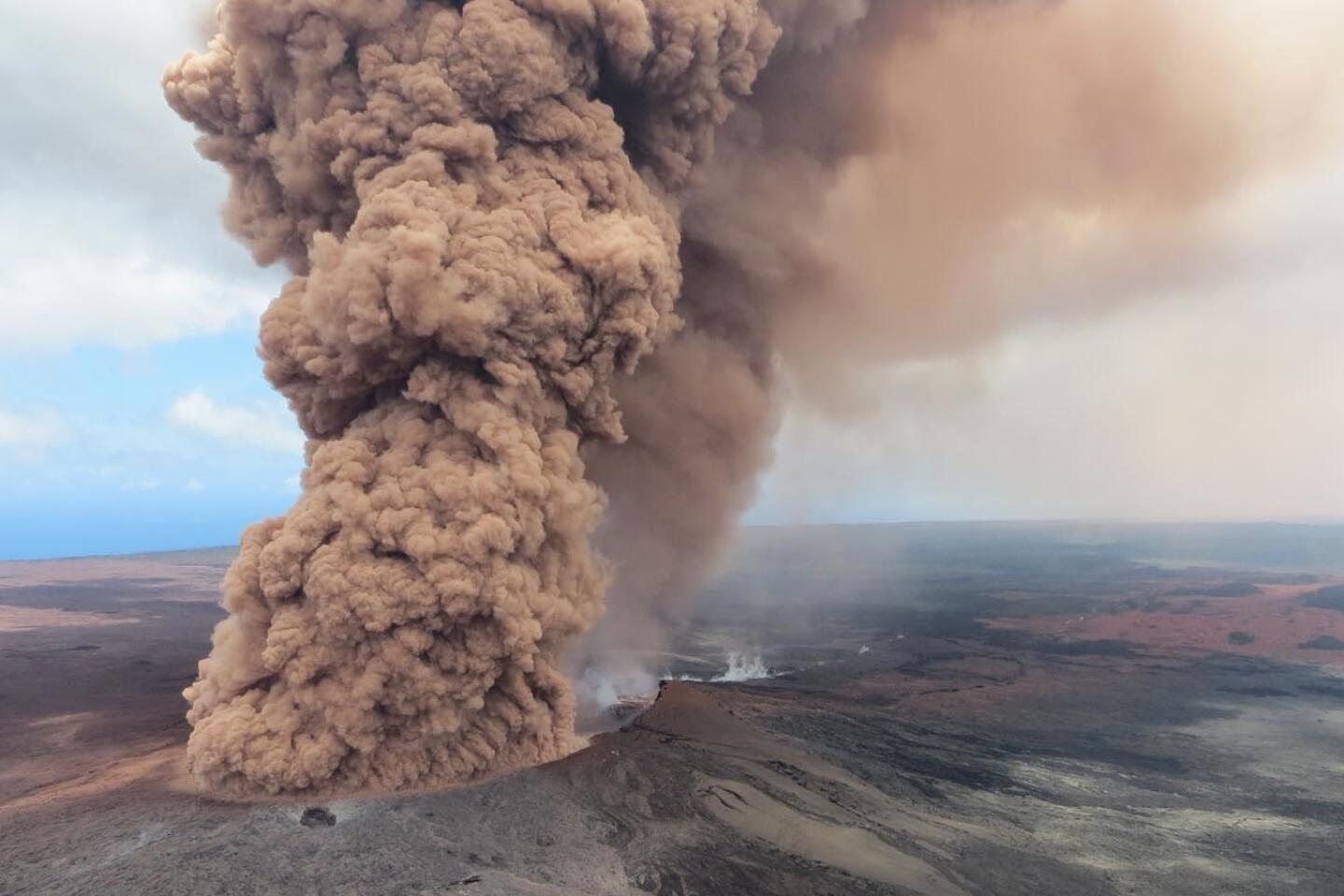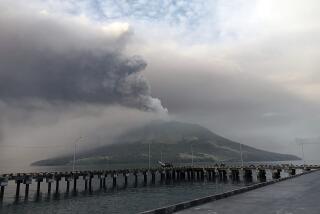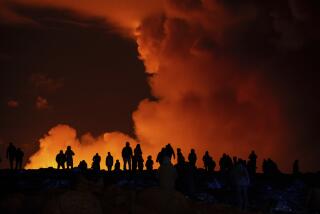Hawaii’s Kilauea emits toxic gas from new cracks bubbling with lava
Kilauea continued Saturday to alter the tropical landscape and foul the air on the island of Hawaii, sending toxic gas and molten lava through new fissures and raising anxiety among thousands of evacuated residents.
“This is as bad as it gets,” said John Bennett, 61, a resident of the Leilani Estates neighborhood forced to evacuate. “We can’t go back in yet. I feel lost. I don’t know what to think. I’ve never been in this situation before.”
An estimated 1,800 people live in the affected area, and many have sought housing in shelters, with friends or on other islands. Some don’t know the fate of their homes or pets left behind.
Bennett first learned what was happening when he came home Thursday and noticed the cracks in his front yard. Driving down the road, he saw lava gushing out. His wife Roberta, 56, an assistant librarian at Kamehameha Schools on the island of Hawaii, was away on Oahu; she flew back with their son Keoni, 29, he said. The three remained in the house until noon Friday. But then they decided it was best to leave.
“Thursday night we saw the glow of lava about a half-mile away from our house,” Bennett said. “The next day we packed and left with our three dogs.The reason we left was the air quality was so bad, with a strong sulfuric smell coming out of the ground.”
Bennett, who works as a tanker man for a tug and barge company that transports gas, diesel and jet fuel around the island, said they have been staying with friends in Hilo on the Big Island.
“We’re strong. I’ve got my wife, my son is back in Honolulu. I think my house is still standing. I heard that four homes have been destroyed.“
Two new cracks in the ground began spewing lava from the volcano Saturday, and new cracks are emitting toxic gas, the U.S. Geological Survey said.
By Saturday afternoon, just one of the cracks was still gushing lava, but that one — Fissure No. 7 — was producing enough lava that flows were moving away from it, said USGS volcano scientist Wendy Stovall, adding that at least three homes have been destroyed and possibly more. Fissure No. 7 may have joined with Fissure No. 2, she said.
On Saturday night, a new crack erupted between Fissures No. 2 and No. 7, the USGS said, with lava spattering at about 8:44 p.m. local time. Lava fountains as high as 230 feet were erupting by 9 p.m.
“The sulfur dioxide gas is very intense” and a “dangerous hazard in the area,” Stovall said. “This is a continually evolving situation.”
Joy Buenaventura, a state representative from Puna — the area where lava has singed the landscape — lives in the Hawaiian Paradise Park neighborhood, one of the largest subdivisions in the state, about five miles from the site of the eruptions.
“People are doing their best to cope with the situation, which basically sprung up on them,” Buenaventura said. “My main concerns are that people are very hungry — they’re basically starving for information — they want moment by moment information as to where the next vent will erupt and where the sulfur dioxide fumes are going to blow and whether or not it’s going to be blowing towards their own house or out into the ocean.”
She said residents also have more immediate concerns.
“They left pets and animals at their homes and they are not allowed back in to feed them,” Buenaventura said. “The National Guard will not do that nor allow that because they are not equipped with gas masks and because of the high concentration of sulfur dioxide.”
Buenaventura added: “There are people still there for fear of burglaries to their homes if they leave. One of the lessons we learned so far is that our first responders need gas masks because the vents have emitted toxic amounts of sulfur dioxide that keeps the police and the National Guard, who are patrolling the area, away. They cannot stay in the area to watch people’s homes and protect the people who stay there.”
The two new cracks raised the number of lava-flowing fissures that have emerged in Leilani Estates to a total of eight since Thursday, Stovall said. Hawaii County officials said the lava activity has interrupted power to Leilani Estates, and water lines have also been impacted by lava activity, meaning that residents in Kapoho will be affected by a shortage of water.
The lava activity has been touch-and-go. Only one or two fissures have been erupting with lava at any single time. Earlier Saturday morning, all fissures had ceased emitting lava when suddenly two new cracks formed.
A fissure forms when a crack opens in the ground and sulfur dioxide gas starts to pour out. The crack widens and lengthens, and the plume of the toxic gas becomes more intense, and lava can eventually begin to sputter out.
The first cracks that started erupting with lava on Thursday afternoon reached heights of up to 100 feet. The USGS Hawaiian Volcano Observatory said that as of Friday afternoon, spatter and lava were accumulating primarily within a few dozen yards from the crack.
The volcanic instability at Kilauea, one of the world’s most active volcanoes and Hawaii Island’s youngest, began on Monday underneath the eastern flank of the volcano, an area known as the East Rift Zone.
It was the collapse of a lava-filled crater in the East Rift Zone on Monday that set off this week’s eruption. The contents of the crater seeped into a network of underground channels and flowed downhill — and on Thursday started gushing out of cracks that had opened in Leilani Estates, which is home to about 1,500 people.
The movement of magma under the surface in recent days triggered on Friday a magnitude 6.9 earthquake as pressure built up, causing an earthquake fault to move. The fault plane that moved is the boundary between the ancient sea floor and Kilauea.
There have been more than 800 earthquakes in the Kilauea volcano region in the past seven days.
Evacuation orders remain in places for all residents of Leilani Estates and a neighboring community of Lanipuna Gardens. Officials warned that the high levels of toxic gas are especially dangerous to the elderly, young and people with weak respiratory systems, and said rescuers may not be able to come to the aid of residents who refuse to evacuate.
Janet Snyder, a spokesperson with the mayor’s office, said Saturday they’re unsure how many people heeded the order to evacuate.
“Some people are sheltering with friends or family or staying in their cars,” she said. Others have chosen to stay in hotels. Some hotels on the island were fully booked.
Hawaii tourism officials emphasized that the volcano threat was limited to a remote region of eastern Hawaii Island, and no flights to any airports in the state are being affected.
“The closest resort areas, in Kona and the Kohala Coast on the island of Hawaii’s west side, are more than 100 miles away from where the lava flow is occurring and shielded by the massive mountains of Maunakea and Maunaloa. Resort areas located on Oahu and Kauai, and in Maui County, are located hundreds of miles from Kilauea volcano,” said a statement by the Hawaii Tourism Authority.
Staff writer Lin reported from San Francisco and special correspondent Chang from Hilo.
UPDATES:
1:30 a.m.: Updated with a new crack.
6:10 p.m.: This article was updated with additional details, including comments from residents who were evacuated..
This article was originally published at 2:10 p.m.
More to Read
Start your day right
Sign up for Essential California for news, features and recommendations from the L.A. Times and beyond in your inbox six days a week.
You may occasionally receive promotional content from the Los Angeles Times.
